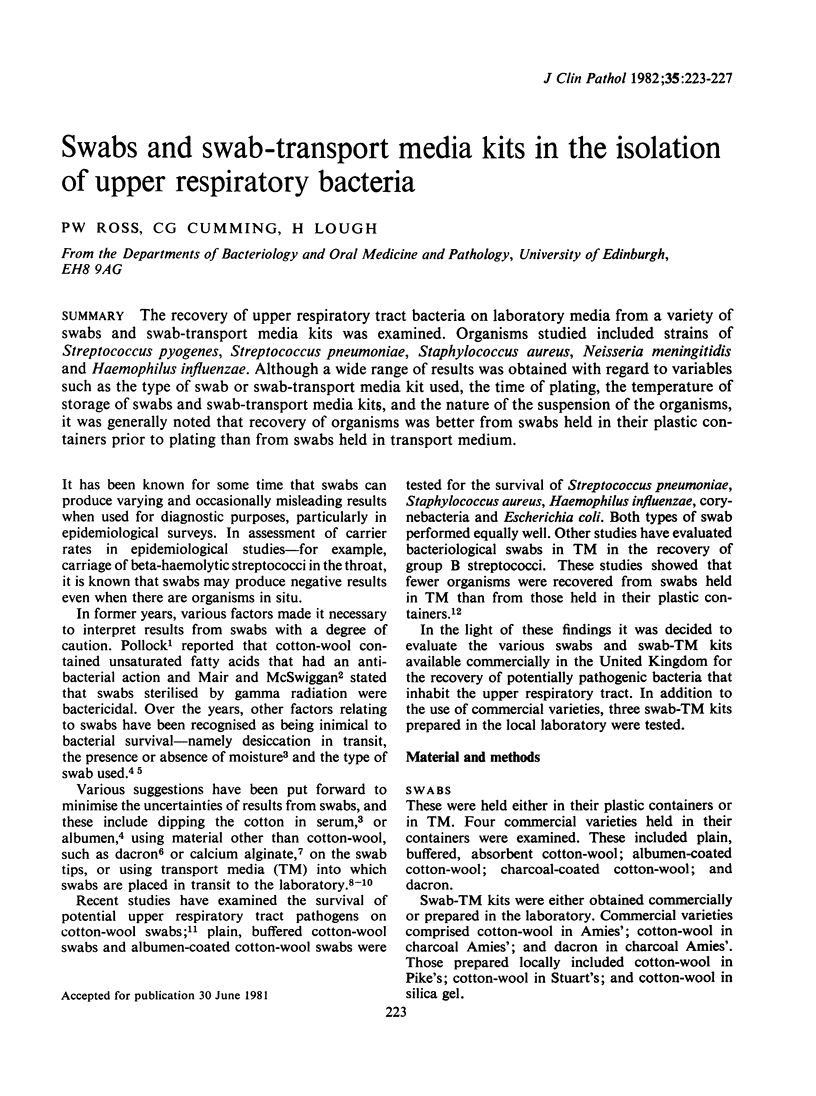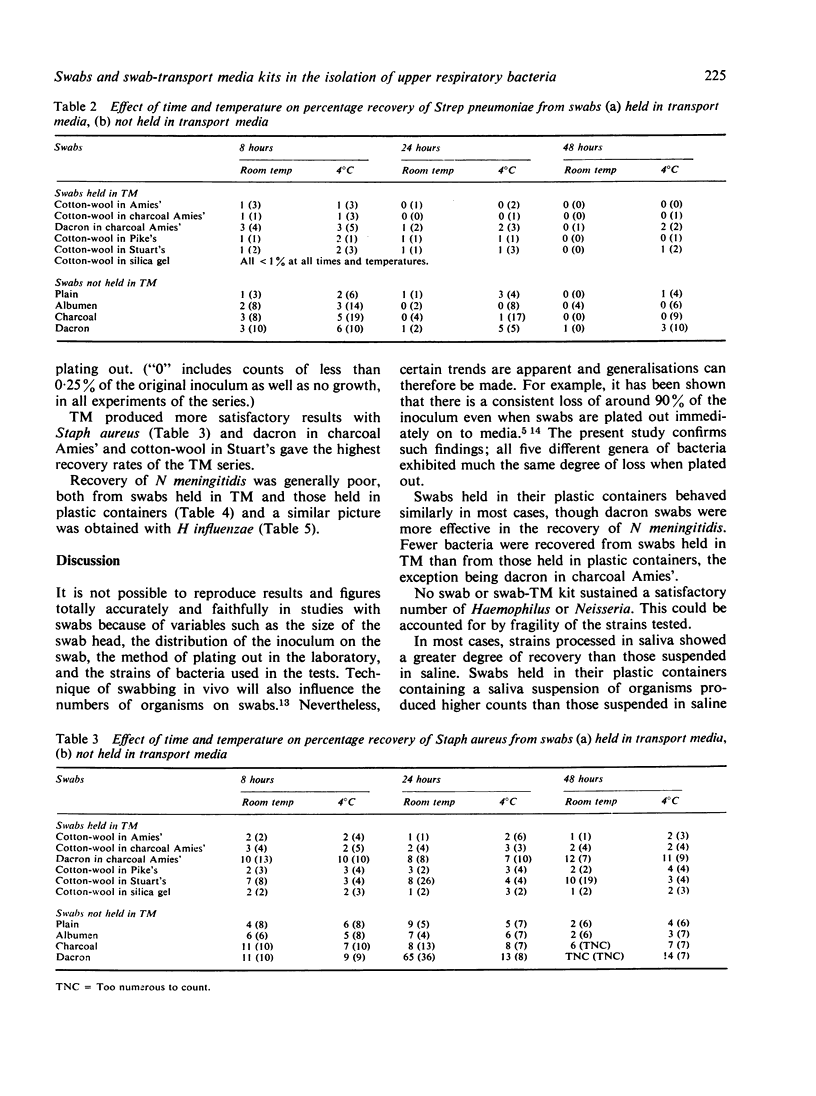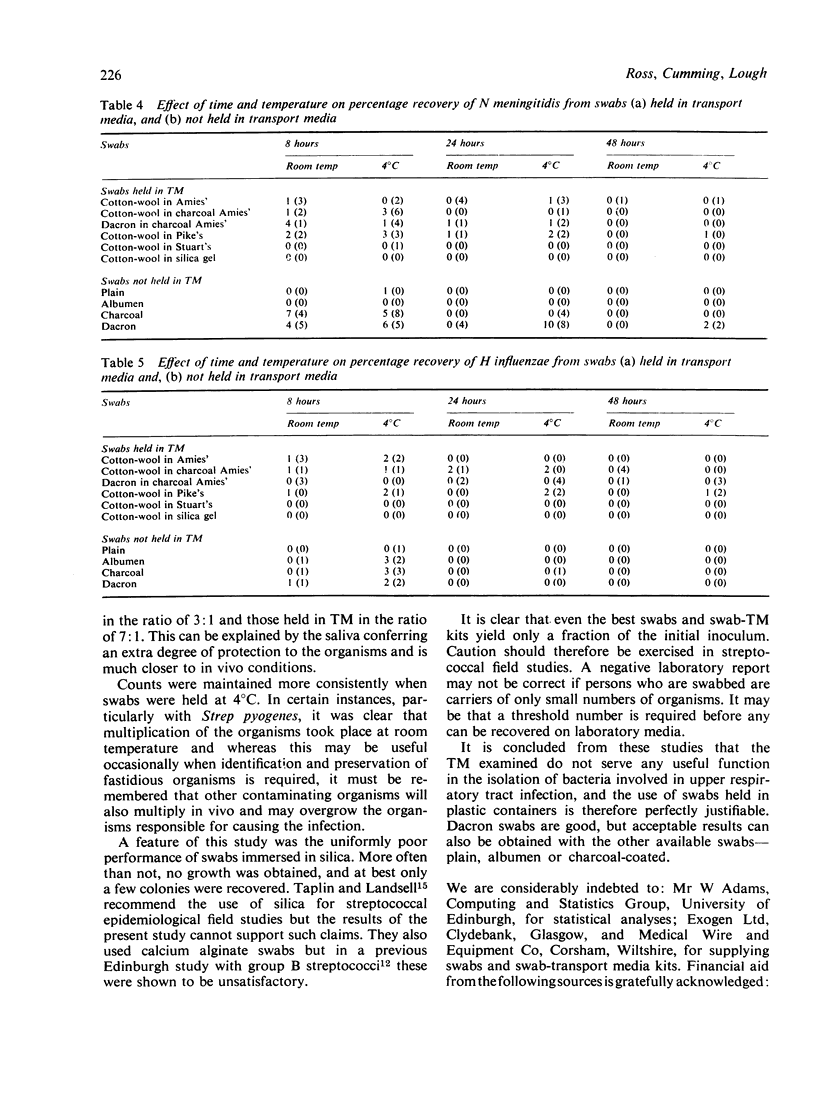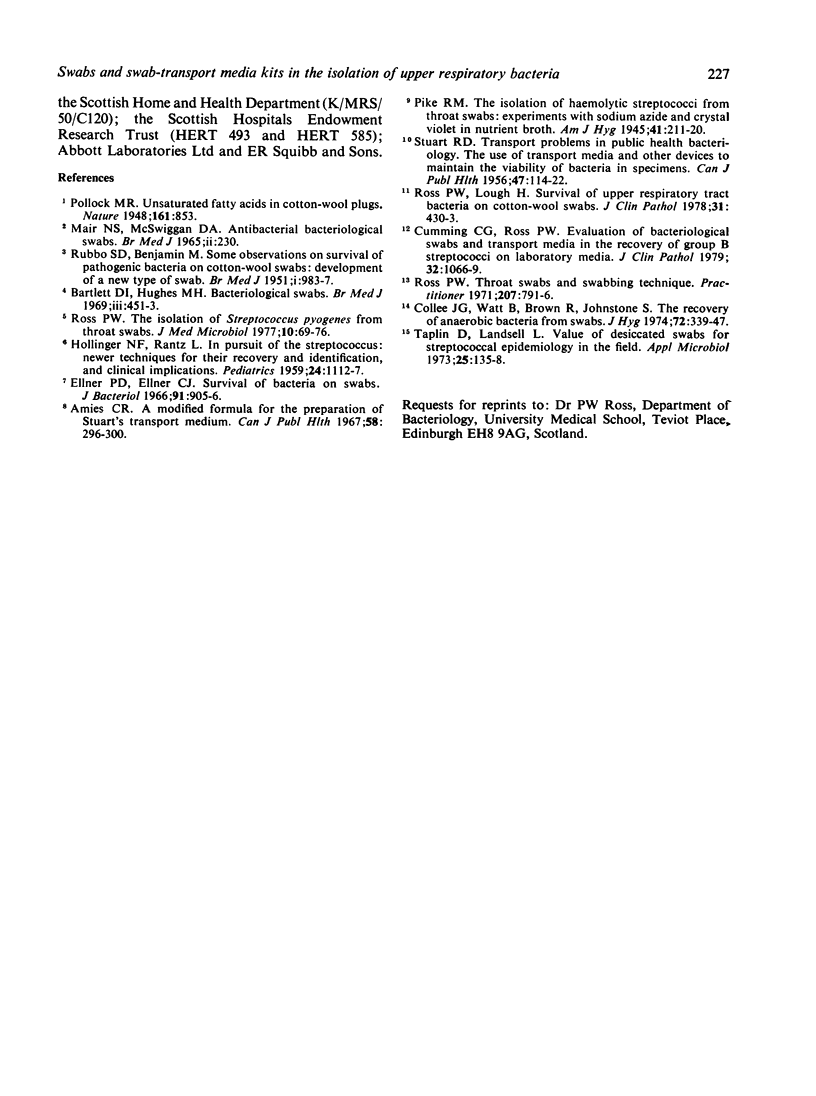Abstract
The recovery of upper respiratory tract bacteria on laboratory media from a variety of swabs and swab-transport media kits was examined. Organisms studied included strains of Streptococcus pyogenes, Streptococcus pneumoniae, Staphylococcus aureus, Neisseria meningitidis and Haemophilus influenzae. Although a wide range of results was obtained with regard to variables such as the type of swab or swab-transport media kit used, the time of plating, the temperature of storage of swab-transport media kits, and the nature of the suspension of the organisms, it was generally noted that recovery of organisms was better from swabs held in their plastic containers prior to plating than from swabs held in transport medium.
Full text
PDF




Selected References
These references are in PubMed. This may not be the complete list of references from this article.
- Amies C. R. A modified formula for the preparation of Stuart's Transport Medium. Can J Public Health. 1967 Jul;58(7):296–300. [PubMed] [Google Scholar]
- Bartlett D. I., Hughes M. H. Bacteriological swabs. Br Med J. 1969 Aug 23;3(5668):450–451. doi: 10.1136/bmj.3.5668.450. [DOI] [PMC free article] [PubMed] [Google Scholar]
- Collee J. G., Watt B., Brown R., Johnstone S. The recovery of anaerobic bacteria from swabs. J Hyg (Lond) 1974 Jun;72(3):339–347. doi: 10.1017/s0022172400023561. [DOI] [PMC free article] [PubMed] [Google Scholar]
- Cumming C. G., Ross P. W. Evaluation of bacteriological swabs and transport media in the recovery of group B streptococci on laboratory media. J Clin Pathol. 1979 Oct;32(10):1066–1069. doi: 10.1136/jcp.32.10.1066. [DOI] [PMC free article] [PubMed] [Google Scholar]
- Ellner P. D., Ellner C. J. Survival of bacteria on swabs. J Bacteriol. 1966 Feb;91(2):905–906. doi: 10.1128/jb.91.2.905-906.1966. [DOI] [PMC free article] [PubMed] [Google Scholar]
- HOLLINGER N. F., RANTZ L. In pursuit of the streptococcus; newer techniques for their recovery and identification, and clinical implications. Pediatrics. 1959 Dec;24:1112–1117. [PubMed] [Google Scholar]
- RUBBO S. D., BENJAMIN M. Some observations on survival of pathogenic bacteria on cotton-wool swabs; development of a new type of swab. Br Med J. 1951 May 5;1(4713):983–987. doi: 10.1136/bmj.1.4713.983. [DOI] [PMC free article] [PubMed] [Google Scholar]
- Ross P. W., Lough H. Survival of upper respiratory tract bacteria on cotton-wool swabs. J Clin Pathol. 1978 May;31(5):430–433. doi: 10.1136/jcp.31.5.430. [DOI] [PMC free article] [PubMed] [Google Scholar]
- Ross P. W. The isolation of Streptococcus pyogenes from throat swabs. J Med Microbiol. 1977 Feb;10(1):69–76. doi: 10.1099/00222615-10-1-69. [DOI] [PubMed] [Google Scholar]
- Ross P. W. Throat swabs and swabbing technique. Practitioner. 1971 Dec;207(242):791–796. [PubMed] [Google Scholar]
- Taplin D., Lansdell L. Value of desiccated swabs for streptococcal epidemiology in the field. Appl Microbiol. 1973 Jan;25(1):135–138. doi: 10.1128/am.25.1.135-138.1973. [DOI] [PMC free article] [PubMed] [Google Scholar]


